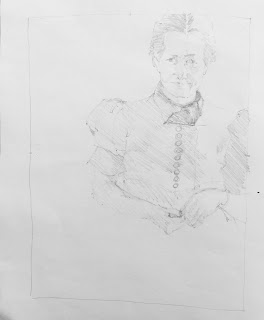We're halfway through September. The redness in the sky has dissipated, though the air quality here is not good. Climate change creates accelerated fire conditions that pine beetles, the three-year drought, and poor forest management feast on. It's not going to get cooler.
We are doubly sequestered now: coronavirus and fires. I look for more things to do in small ways inside the house. I'm both an artist and a gardener. I've tried growing plants in my kitchen. I've signed up for a 30-day art challenge and decided to paint objects in my workroom.
With the smoke, we haven't seen shadows for days. Hoping for a sunny spot, I've been growing small bits of greenery in baking cups. I felt a small joy to see a shadow near a window.
The ends of carrots, onions, and celery can be placed in water, which is a fun scientific experiment. And a good way to include a few fresh greens in our food. Left in the water, the ends will sprout to look like miniature forests. The celery comes up like tiny celery stalks. I've tried planting the results in soil, but so far I've had no success in turning these beginnings into regular plants. I keep trying. The greens make excellent additions to salads or on potatoes or eggs. Besides, watching them grow gives me one more thing to do.



Each month this year brought new challenges. In the first few weeks of sheltering, we seemed to have an endless amount of time. We took slow walks, we read mountains of books and newspapers, we chatted on Zoom, and watched movies we'd never heard of, but now our days are filled. We wonder where the time went, but we keep adding more things to our calendars. Some of the things that I had on a perpetual list of things to do I realized that I will never get done. They were a flickering interest that disappeared once I had added them to my list.
What new things are you doing now?
Some of my daily paintings for the 30-day Challenge:































